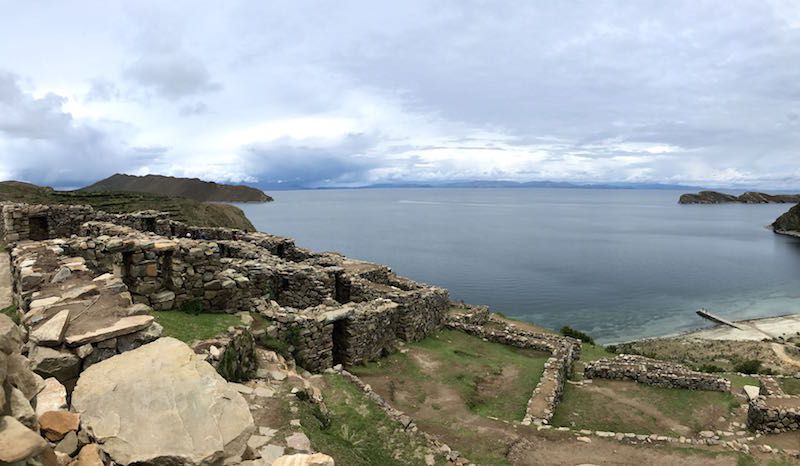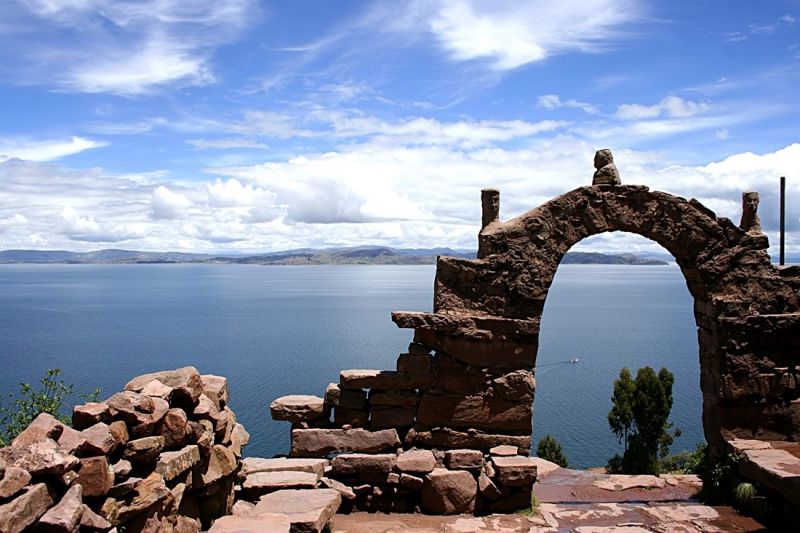Ancient Inca Technology Could Save Lake Titicaca
Published on by Water Network Research, Official research team of The Water Network in Technology
Due to remarkable discoveries in and around the Titicaca lake, it is under UNESCO's protection of the Underwater Cultural Heritage. However, it is struggling with a massive pollution problem.
At over 12 000 feet above sea level, on the border of Peru and Boliva, Lake Titicaca is the highest large navigable lake in the world.
 The clear cold waters have revealed wondrous archaeological finds—dramatic vertical terraced farms, temples, gold statues, pottery, artwork and even an entire underwater building—that have shed light on the Incan empire; an enigmatic pre-Columbian civilization that went on to encompass much of South America.
The clear cold waters have revealed wondrous archaeological finds—dramatic vertical terraced farms, temples, gold statues, pottery, artwork and even an entire underwater building—that have shed light on the Incan empire; an enigmatic pre-Columbian civilization that went on to encompass much of South America.
And solutions to this modern issue, as it transpires, are coming from an unlikely source.
The Inca nation was the largest indigenous empire to rule the Americas before the Europeans arrived (and indeed the largest empire in the world up until the 16 000s). They believed the waters of Lake Titicaca were the mythical birthplace of their civilization.
The biggest concern is huge amounts of chemical pollution from cities and farms finding its way into the water. Farmers around the lake have replaced the traditional age-old terraced model of farming, (which was excellent at retaining water and preventing runoff), with flatter layouts of farms that offer short term solutions. The newer farming styles waste water and create chemical runoff into the lake that is having a devastating effect on the biodiversity.
In addition, sewage outfalls from the many cities and settlements around the lake are currently pumping untreated raw sewage into the water, and some mining operations are releasing heavy metals such as lead and mercury.
The levels of pollution are so bad, that a study found mercury, cadmium, zinc and copper in four types of fish that form part of the local population’s diet at levels higher than those advised for human consumption.
The waters are also a habitat for thousands of birds, numerous endemic fish species, and the famous Titicaca water toad (Also known as the Scrotum Frog), a huge freshwater toad that became famous after Jacques Cousteau’s Titicaca expedition in the 70’s. Millions were estimated to live in the lake at the time. But today, the frog’s numbers have inexplicably plummeted, and the species is now listed as critically endangered by the International Union for Conservation of Nature.
Inter-American bank has allocated USD 80 million to deal with the problems that the lake faces.
One of the projects is to work with farmers around the lake to ‘resurrect’ the ancient Incan way of agriculture.
The unique step terrace farms, cut into the sides of the hills all around the lake, have been used by people for thousands of years, and are excellent for stabilizing the hills, for water retention, for managing resources, soil and encouraging biodiversity.
 By learning ancient technologies, farmers could learn about technical instruments and processes of ancient people that were involved in sustainable cultivation.
By learning ancient technologies, farmers could learn about technical instruments and processes of ancient people that were involved in sustainable cultivation.
Titicaca has seen the rise and fall of numerous cultures and civilisations. The only constant has been the lake itself.
Like the Romans of Europe, the Incas were a people of conquest, usurping previous empires through sheer force. Amazingly, they achieved this cultural boom without the help of steel, the wheel, or even domesticated animals. In short, they were astoundingly creative for their time, and enigmatic in their rise.
They built their culture on the ruins of the last, and they managed to survive and thrive on the natural resources that were left behind.
While our new civilization accelerates and grapples with its own overwhelming success, we are learning from the ghosts of the past, to find ways to save the lake from the wake we leave behind.
Source: National Geographic
Media
Taxonomy
- Technology
- Environment
- Pollution
- Lake Management
- Sewage
- Environment
- Technology Utilization
- Pollution
1 Comment
-
Lake Titikaka and Isla del Sol (Island of Sun) are really very beautiful places and one of must visit places in South America. Additional pollution is also coming from tourist and visitors who stay overnight there. Therefore improvement of sanitation facilities should be done. I do hope that some companies will be ready to donate their equipment.